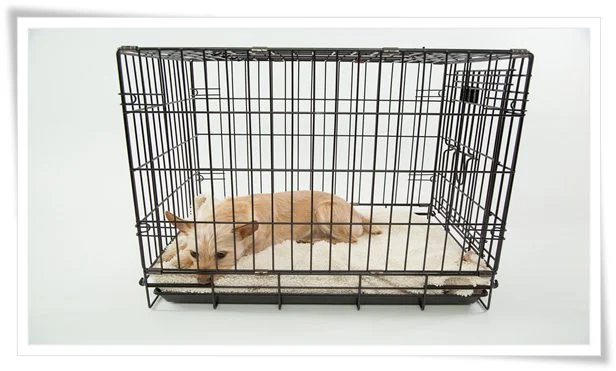The Basics of Crate Training
One of the great things about using crate training is that it works exceptionally well for puppies and for adult breeds. Of all tools you would consider to train your dog, the crate is by far the most valuable. Keep in mind that dogs by nature are den animals. This means they feel comfortable and safe by having a space they can call their own. Therefore, when using crate training, which is often done for housebreaking, the crate is never used for punishment, just to help teach the dog bladder control.
Because dogs are clean animals, they hate having accidents in the crate. We recommend you place a clean blanket to make the crate soft and cozy, discouraging the dog from having an accident even more. In addition to housebreaking, the crate is also highly beneficial for other types of training to include chewing, digging, and so on. Again, this is a safe zone, not a place of punishment.
The key with crate training specific to housebreaking is to keep your dog inside so he learns to hold his bladder. You never want to feed your dog in the crate, let him sleep in the crate, although this can help initially, or play in the crate. Instead, view the crate as a place to rest and regain focus. Now, for puppies, keeping him in the crate at night to teach him to hold his bladder is fine and in most cases, necessary. However, as the puppy ages, you want to start moving him outside the kennel.
Using the crate will also give you the opportunity to verbally praise and pet your dog when he does not eliminate inside. When you get ready to take your dog out to do his business and you see that he has not made a mess, tell him, “Good boy”, followed by “go potty.” On the other hand, if you find he has had an accident, do not scold him. Chances are he is going to feel bad already. Therefore, simply give him the potty command and clean the crate.
The same would work for teaching your dog not to chew on things. Many times, puppies will use anything they can get in their mouth to help with teething to include shoes, chair legs, food bowls, etc. Whenever you catch the dog in the act of destructive behavior let him take a little time out in the crate. Show him the object while telling him, “NO.” After about 10 minutes in the kennel, take him out. You will likely have to repeat this process many times over but with consistency, he will learn to stop chewing. In the meantime, make sure you have chew toys and bones that he is allowed to chew on, letting him know these items are okay.
You could also use the crate to train your dog to stop barking. Let us say you have a dog that barks at everything, to include the wind or his own shadow. Again, get his attention while saying something to the effect of, “NO barking.” Then, put him in the crate for 10 to 15 minutes, taking him out and repeating as necessary. Along with the crate, you can also take a few drops of lemon juice, dripping it into his mouth while giving him the no bark command. The juice does not do any harm but it will get his attention. Eventually, he will make the connection between barking and the sour taste, choosing to stop barking.


Comments
Post a Comment